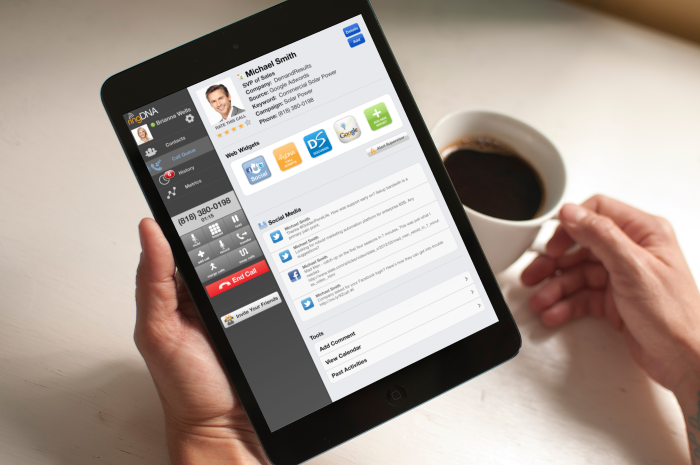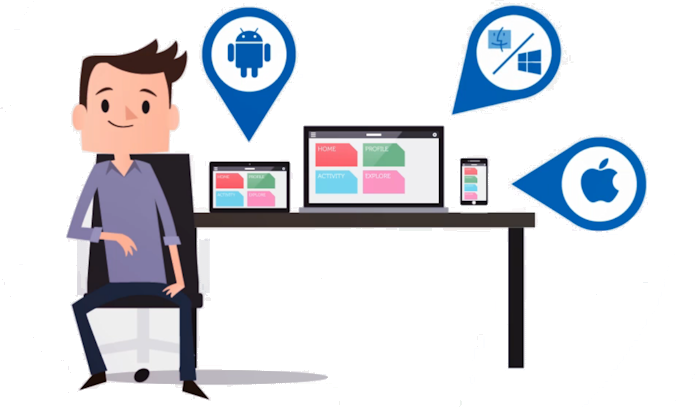
Credits : Sdtimes
The explosion of mobile devices and apps has completely disrupted .NET development. While desktop and web applications remain popular in enterprises, the same developers have had to adapt their applications for mobile devices or develop entirely new mobile apps. Syncfusion was an early supporter of Xamarin that continued to enhance its offerings as Xamarin matured and was more deeply integrated with Microsoft products post-acquisition. Syncfusion has also changed its revenue model from per-seat licensing to flat-fee, which is great news for enterprise developers in any size organization.
“The rapid expansion of mobile space was somewhat of a shock for C# developers because up until that time, everything was Microsoft-centric,” said Daniel Jebaraj, vice president at Syncfusion. “A number of them had to figure out how to get their critical applications onto iOS and Android devices, which was challenging because they had to learn Java, Objective-C or Swift, or hire the talent.”
Some developers side-stepped the problem by building mobile websites or mobile applications that were really wrappers around a website, but the user experience wasn’t the same as a native application. The Xamarin platform was an attractive option, and it’s a lot more attractive now that Xamarin dovetails well with the .NET stack.
Reuse Code
One of Xamarin’s main features is its ability to reuse code. However, developers also want best-of-breed functionality. Syncfusion’s Xamarin controls that are similar to the ones it built for desktop and web environments. Now, Syncfusion offers more than 90 Xamarin controls which include chart and grid controls, a calendar control, a Kanban control, a treemap, an Excel-like spreadsheet, gauges, and reporting packages for Excel, PDF and PowerPoint – all in one package.
“Our controls are well-integrated with the Visual Studio environment so you can work with them just as you work with Microsoft’s native controls,” said Jebaraj. “They behave the same way as Microsoft controls and they are designed for optimal performance. If you’re maintaining an application on a XAML platform such as WPF, then a lot of that code will simply carry over.”
Syncfusion provides about 80 percent of the standard building blocks enterprise application developers need to build app so they can focus on innovation rather than reinventing controls that are available off-the-shelf.
Get Everything You Need, And More
Syncfusion’s unlimited license gives developers access to more than 800 components and ready-to-use platforms for Big Data, data integration, dashboards and reports – everything developers need to build stunning applications for desktop, web, and mobile users plus the tools they need for data, analytics and reporting.
“We’ve spent a lot of time and effort building our finished platform products because we see customers building things like dashboards and reports over and over again,” said Jebaraj. “They’re fairly complex products to build and support, and fairly expensive to license from other vendors.”
Syncfusion has spent several years building its dashboarding and reporting products, both of which rival some the most popular data visualization and reporting packages available today. Users get access to all the functionality they need to build highly aesthetic, high performance decision-making tools on which today’s businesses rely.
“We license those products along with our controls so the same team using our controls can benefit from pre-packaged products and deploy them as these as they stay fit,” said Jebaraj.
“You can also customize them and embed them in an application using our SDK.”
Get a Flat-fee License
Syncfusion now offers annual flat-fee licenses so the number of developers using the product is now irrelevant. In addition, its licensing model has flexibility built in so customers can buy licenses scoped to a project, a department, or a line of business.
“We used to license by the seat, but it was challenging for us and our customers,” said Jebaraj.
“We don’t want to be a position where we’re counting heads, we don’t want to put our customers in a position where they’re counting heads, so we came up with the idea of a flat license which is a flat fee paid every year.”
For example, an organization with $100 million annual revenue would pay just $4,000 for a global license, which is what Syncfusion used to charge for two seats. The new revenue model has been popular among existing customers and it has also attracted many new customers who have discovered that the flat fee is more affordable than competitive options.
“Any company that is doing a lot of development in house can potentially save a lot of money on licensing costs,” said Jebaraj. “We find the new model to be better for our customers and better for us.”
Another thing that distinguishes Syncfusion from its competitors is its heavy investment in R&D. That strategy has enabled Syncfusion and its customers to continually deliver greater value.
This article is shared by www.itechscripts.com | A leading resource of inspired clone scripts. It offers hundreds of popular scripts that are used by thousands of small and medium enterprises.











